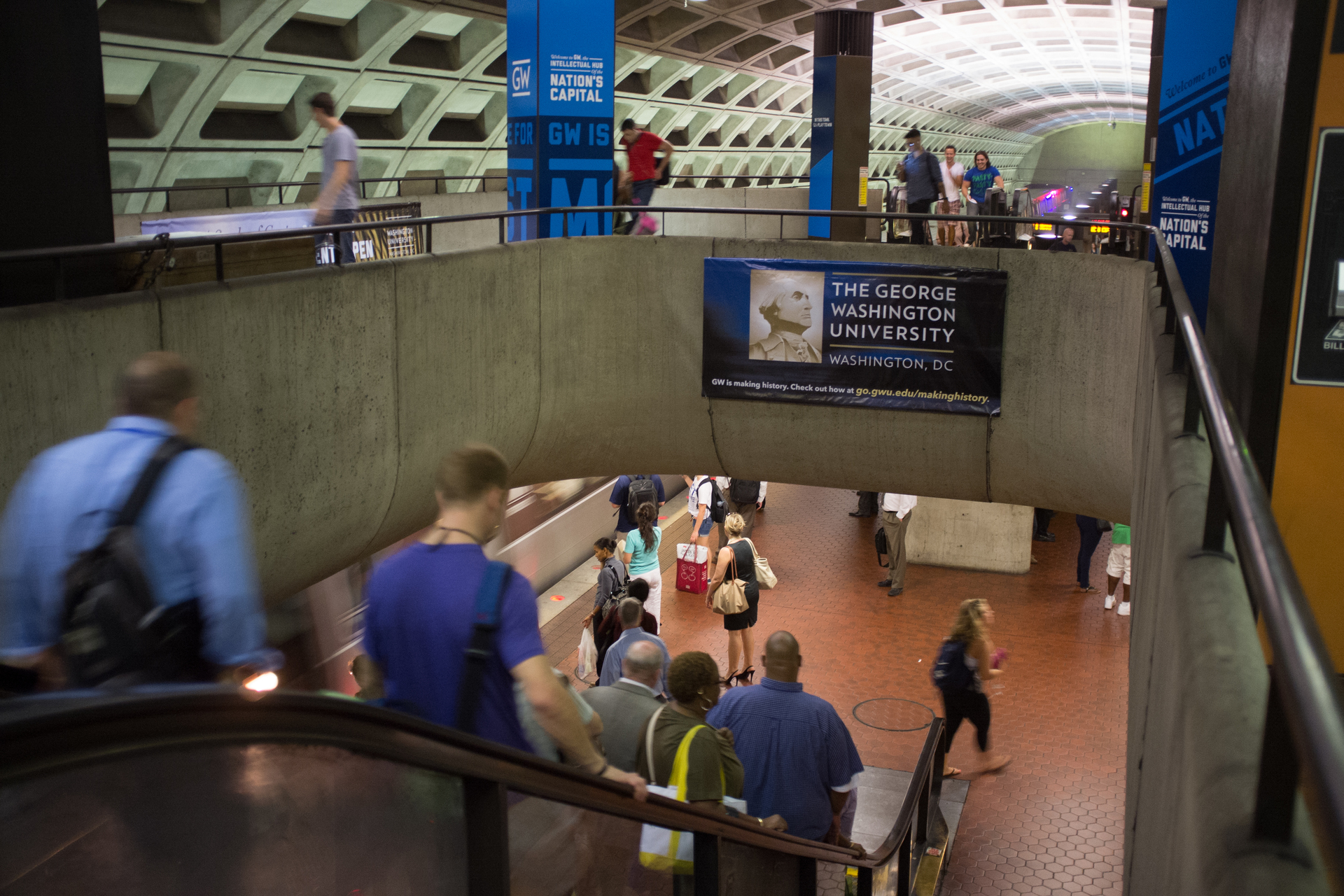By Nick Erickson
Perhaps paying homage to her Midwest roots, George Washington University third-year economics and geography major Anna Weber quoted Field of Dreams when describing the university’s partnership with Washington Metropolitan Area Transit Authority’s (Metro) U-Pass program, which provides students with unlimited use of Metrorail and Metrobus for a discounted, flat fee.
“If you build it, they will come,” the Northfield, Minn., native said.
And like the ghosts of baseball players past emerging from an Iowa cornfield in the 1989 Oscar nominated film, students at GW have turned out in high numbers to ride the D.C. region’s public transportation service that has helped them get around the area.
Since the U-Pass program’s full-time inception at the start of the spring semester on Jan. 10, there have been more than 380,000 total rides on either Metro’s rail or bus system, according to the latest GW ridership survey released in mid-March.
U-Pass is a $100 subsidized student fee for eligible full-time undergraduate, graduate, law, medical and doctoral students, and the university covers the rest of the cost of the U-Pass program, which charges GW $1 a day during the semester per enrolled student. The program offers those living on- or off-campus the option of a more affordable way to get to and from campus.
“I think the biggest thing is once it's paid for, it's on you to make the most of it,” Weber said. “Once you have it, you don't realize how awesome it is until you can walk into the Metro and be able to pretty much go anywhere you want.”
Because of the flat fee, students can forgo concerns about peak time fares or account balances and are free to move beyond the confines of Foggy Bottom.
Junior international affairs major Mike Martineau estimated spending about $20 per week on Metro during the fall semester while getting to his lobbying internship near Gallery Place. A frequent user of U-Pass, Martineau has not only made up the flat fee in a short amount of time but has far surpassed its benefit.
“It’s definitely nice, in that regard, to not feel it in my bank account,” said Martineau.
GW students are using their U-Pass for essential trips such as getting groceries as well as leisure outings to explore the amenities—Martineau is particularly pleased that U-Pass allowed him to discover the Ethiopian food in Columbia Heights—the D.C area has to offer. Outside of the Foggy Bottom station, Orange and Blue Line services just across the Potomac River to Virginia account for the most common destinations.
According to that same ridership survey, Rosslyn and Pentagon City are the second and third busiest stops on the list, with Crystal City, Court House and Ballston—where Weber has gone on her U-Pass card to use the skating rink—also appearing in the top-10. U-Pass users also frequent downtown D.C. stops such as Farragut West, Farragut North and Metro Center.
For students who have other modes of transportation, U-Pass can also come in handy. While third-year journalism and mass communications major Baxter Wareham has a car on campus, he gets plenty of use out of his U-Pass when he wants to go downtown without paying for parking. In addition, Wareham, who hails from New Paltz, N.Y, appreciates a more convenient way to get to any of the three area airports or Union Station without having to worry about overnight parking.
“Even though I have my other options, it's still a great program to have to fill in the gaps,” Wareham said.
GW joined U-Pass after students advocated for a more cost-effective way to traverse the city and its surroundings. A semester in, Weber said she and her fellow students are appreciating the extra freedom of moving about without worrying about a cost that can quickly add up. People flock from all over the world to visit D.C., and GW students who now call it home are taking advantage of living in one of the most recognizable metropolitan areas on earth.
“It enables us to explore D.C. more,” she said. “And that's kind of the whole point of going to GW.”



